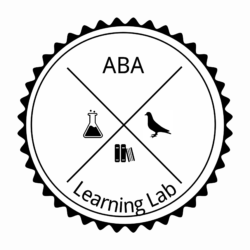Brian Kaminski, RBT, Graduate Student of Behavior Analysis
Featured on briankaminski.org
Of all of the behavior change tactics in a behavior analyst’s arsenal, positive reinforcement is arguably the proverbial intervention of choice – and for good reason. Its well established efficacy, acceptability, and marketability to parents and educators makes positive reinforcement an ideal option for promoting desirable behavior.
To quickly define, positive reinforcement is a “stimulus that increases the frequency of a response it follows (Malott, 2013).”
It can take many forms – tangible items (🍕🍷), activities (🏌️💃) or simply attention (😻👍). Did that pay check you received for working last week make you show up on Monday? If it did, score one more for positive reinforcement.
Now that we have established what positive reinforcement is and why we use it, it may beg the question,
“Is positive reinforcement ever not advised?”
In the past, my answer would have been a simple “no.”
I was taught that positive reinforcement was always preferable over punishment or other alternatives to promote positive behavior. It was like oxygen or water (or coffee) – you can never get enough of it.
In the realm of behavior analysis, positive reinforcement reigned as king…
That was until I learned of some specific contexts in which positive reinforcement is either ineffective or counterproductive.
1. When delivered under aversive conditions
Let me paint a picture for you. You are working with a child with developmental disabilities on a self-dressing program that presents significant challenges. The kid hates it. As you deny attempts at escape and physically prompt him through every step (squirming and fussing), you also praise, “Great job Johnny! Good job getting dressed!”
Anything wrong with this scenario?
To name a few things:
a) Praise under these conditions likely won’t increase future dressing behavior, thus it is not functioning as a reinforcer.
b) When delivered consistently under such aversive conditions, praise is more likely being paired with punishment. Big problem.
Rule #1 of Reinforcement – deliver it contingent on appropriate responding.
2. When delivered in a context that makes an individual feel incompetent
Imagine for a second you’re back in college (you can almost taste the ramen). Midterms just rolled through, and let’s just say this semester was a doozy.
As your professor begins passing back exams, he pauses in front of you and smiles.
“Great work Brian!” he grins, handing back your exam.
Your grade?
D+ (cue the Tommy Boy intro).
Chris Farley aside, let’s look at a more clinically relevant example.We’ve all been stuck trying to teach that one particular skill to a client that just does not seem to resonate. Try as we may and despite the child’s best efforts, you’ve reached a roadblock. You’re left scratching your head while the kid is left frustrated and upset.
“Build this replica Boeing 747!”
(Pieces flying everywhere. Mayhem ensues.)
“Umm … Nice building!”
What do we do in situations like these?
A couple of suggestions:
a) Examine the target – While you may not be teaching model airplane building during your ABA sessions, some targets may appear to be just as complex to your learner. For multi-step targets, consider breaking the skill up in a task analysis and implementing a backwards chaining procedure.
Backwards chaining (in which you start from the last step in the task and gradually tack on more following successes) gives you more opportunities to praise and reinforce correct responding. Bringing us to our next point.
b) Reinforce process over product There may be occasions in which the final outcome (“product”) is not produced with sufficient quality or regularity. Rule #1 states that reinforcement must be delivered contingent on appropriate responding. So what do you do when there’s not much “appropriate responding” to reinforce?
Take hitting a baseball for example. Do you know what you call a professional baseball player who fails to hit a ball on 70% of his plate appearances?
An All-Star.
Hitting a major league fastball has widely been known as the hardest skill in all of professional sports. That is why a .300 batting average (which equates to a 70% “failure rate”) is considered the bench mark for excellence.
So if even our best pros fail to get a hit at such a precipitous rate, how can a little league coach reinforce his slugger who can’t even make contact?
By reinforcing the process of hitting.
A well constructed task analysis will identify all of the sequences of behaviors that lead up to hitting a ball (assuming a proper stance, keeping your knees bent, planting your back foot, initiating the swing from your hips, etc.).
This will give coach ample opportunities to praise and shape hitting behavior while keeping our little guy right in the action.
3. When consistently delivered before feedback
 There is an insidious craze sweeping through businesses and schools, that once consumed, leaves its recipient dazed and confused.
There is an insidious craze sweeping through businesses and schools, that once consumed, leaves its recipient dazed and confused.
I’m not talking about a sub from Jimmy John’s with bad avocado.
I’m talking about the “Sandwich Method” of feedback.
You likely know what I’m referring to.
When delivering corrective feedback, the evaluator first begins with a compliment, followed by a critique, then ending with another compliment.
“Mrs. Thompson, we think Charlie is super. He’s such a creative kid and boy does he like art class!
… He did consume an entire vat of Elmer’s glue today …
But hey, did I mention how awesome he did at circle time? He can sing all of ‘The Ants Go Marching’ now!”
Seems harmless, right? What’s so bad about this approach?
Message gets mirky – What was the real purpose of the last exchange? Was it really to tell our parent what an awesome singer her child is? No!! It was to have him stopping eating craft supplies.
Such feedback delivery often leaves the listener misguided and waters down the actual message trying to be conveyed.
Praise looses itseffectiveness – What happens to your listener if every time you deliver a compliment, you follow it up with something they did wrong?
“Oh crap, Brian is telling me I did a great job again. What did I mess up on this time?”
In behavioral terms, praise becomes a discriminative stimulus (a “cue”) for punishment.
This means that praise looses its reinforcing value, even in contexts not associated with feedback.
Let’s admit it – we may have ulterior motives – What’s the real reason the sandwich method has been heralded as the feedback method of choice? Is it because of overwhelming empirical evidence indicating its efficacy? Nope. More than likely its because the sandwich method makes the evaluator more comfortable with delivering feedback, a less than enjoyable activity for most.
If I learned one thing from B.F. Skinner’s “Verbal Behavior” it’s that verbal behavior must be evaluated based on its effects of the listener (not the speaker).
(Compliments to Dr. Heather McGee from Western Michigan University for her valuable insight on the Sandwich Method. I was a guilty culprit up until about a week ago).
To learn more about characteristics of effective feedback, click here.
While I’ve spent the past 800 words conveying why and how not to deliver positive reinforcement, I must still concede that it remains the Golden Child and crowning achievement of Behavior Analysis. The evidence in support of positive reinforcement in applications across education, healthcare, business, and society is quite simply overwhelming and demands consideration by leaders and public policy makers.
I’d like to finish with a quote from Anthony Biglan from his book, “The Nurture Effect: How the Science of Human Behavior Can Improve Our Lives and Our World.”
In this quote, Biglan describes the effects of one positive reinforcement-based educational program called the “Good Behavior Game” and its latter effects on its participants:
The kids who had played the [Good Behavior Game]—only for 1 year, in either the first or second grade—were less likely to be addicted to drugs or suicidal and had committed fewer crimes. An independent analysis of the economic benefit of this intervention indicated that for every dollar spent on the Good Behavior Game, about eighty-four dollars could be saved through reduced special education, victim, health care, and criminal justice costs. (p. 74)

